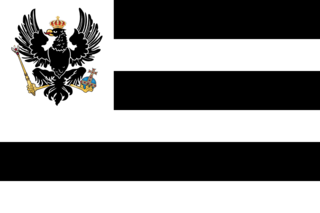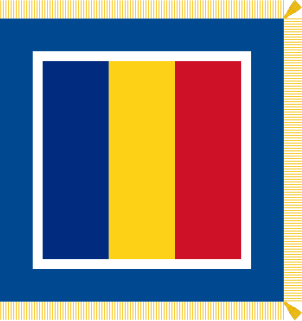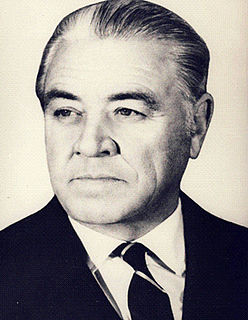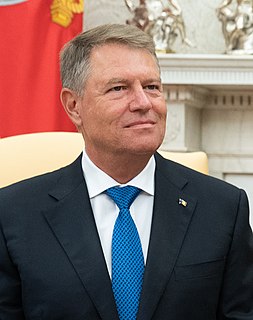
Moldova, officially the Republic of Moldova, is a landlocked country in Eastern Europe. It is bordered by Romania to the west and Ukraine to the north, east, and south. The capital city is Chișinău.

Romania is a country located at the crossroads of Central, Eastern, and Southeastern Europe. It shares land borders with Bulgaria to the south, Ukraine to the north, Hungary to the west, Serbia to the southwest, and Moldova to the east, and has its opening to the Black Sea. It has a predominantly temperate-continental climate. With a total area of 238,397 km2 (92,046 sq mi), Romania is the twelfth-largest country in Europe and the sixth-most populous member state of the European Union, having approximately 19.3 million inhabitants. Its capital and largest city is Bucharest. Other major urban areas include Cluj-Napoca, Timișoara, Iași, Constanța, Craiova, Brașov, and Galați.
This article covers the history and bibliography of Romania and links to specialized articles.

Hohenzollern-Sigmaringen was a principality in southwestern Germany. Its rulers belonged to the senior Swabian branch of the House of Hohenzollern. The Swabian Hohenzollerns were elevated to princes in 1623. The small sovereign state with the capital city of Sigmaringen was annexed to the Kingdom of Prussia in 1850 following the abdication of its sovereign in the wake of the revolutions of 1848, then became part of the newly created Province of Hohenzollern.

Nicolae Ceaușescu was a Romanian communist politician and dictator. He was the general secretary of the Romanian Communist Party from 1965 to 1989, and the second and last Communist leader of Romania. He was also the country's head of state from 1967, serving as President of the State Council and from 1974 concurrently as President of the Republic, until his overthrow and execution in the Romanian Revolution in December 1989, part of a series of anti-Communist and anti-Soviet uprisings in Eastern Europe that year.

The King of Romania or King of the Romanians, was the title of the monarch of the Kingdom of Romania from 1881 until 1947, when the Romanian Workers' Party proclaimed the Romanian People's Republic following Michael I's forced abdication.

Ion Iliescu is a Romanian politician and engineer who served as President of Romania from 1989 to 1996 and from 2000 until 2004. Between 1996 and 2000 and also from 2004 to 2008, year in which he retired, Iliescu was a senator for the Social Democratic Party (PSD), of which he is the founder and honorary president.

The president of Romania is the head of state of Romania. Following a modification to the Romanian Constitution in 2003, the president is directly elected by a two-round system and serves for five years. An individual may serve two terms. During their term in office, the president may not be a formal member of a political party.

The term Greater Romania usually refers to the borders of the Kingdom of Romania in the interwar period. It also refers to a pan-nationalist idea.

The Romanian Greek Catholic Church or Romanian Church United with Rome, Greek-Catholic, sometimes called, in reference to its Byzantine Rite, the Romanian Byzantine Catholic Church is a sui iuris Eastern Catholic Church, in full union with the Roman Catholic Church. It has the rank of a Major Archiepiscopal Church and it uses the Byzantine liturgical rite in the Romanian language. It is part of the Major Archiepiscopal Churches of the Catholic Church that are not distinguished with a patriarchal title.

Ion Gheorghe Iosif Maurer was a Romanian communist politician and lawyer, and the 49th Prime Minister of Romania. He is the longest serving prime-minister in history of Romania.

Chivu Stoica was a leading Romanian Communist politician, who served as 48th Prime Minister of Romania.

The Romanian Revolution was a period of violent civil unrest in Romania during December 1989 as a part of the Revolutions of 1989 that occurred in several countries. The Romanian Revolution started in the city of Timișoara and soon spread throughout the country, ultimately culminating in the show trial and execution of longtime Communist Party General Secretary Nicolae Ceaușescu and his wife Elena, and the end of 42 years of Communist rule in Romania. It was also the last removal of a Marxist-Leninist government in a Warsaw Pact country during the events of 1989, and the only one that violently overthrew a country's leadership and executed its ruler.

Klaus Werner Iohannis is the president of Romania. He became leader of the National Liberal Party (PNL) in 2014, after having served as leader of the Democratic Forum of Germans in Romania (DFDR/FDGR) from 2002 to 2013. Iohannis was a physics teacher and a school inspector before entering full-time politics.

The Government of Romania forms one half of the executive branch of the government of Romania. It is headed by the Prime Minister of Romania, and consists of the ministries, various subordinated institutions and agencies, and the 42 prefectures. The seat of the Romanian Government is at Victoria Palace in Bucharest.

The following outline is provided as an overview of and topical guide to Romania:

The State Council was the supreme executive authority and the collective head of state of the Socialist Republic of Romania from 1961 to 1989.
This page is based on this
Wikipedia article Text is available under the
CC BY-SA 4.0 license; additional terms may apply.
Images, videos and audio are available under their respective licenses.















